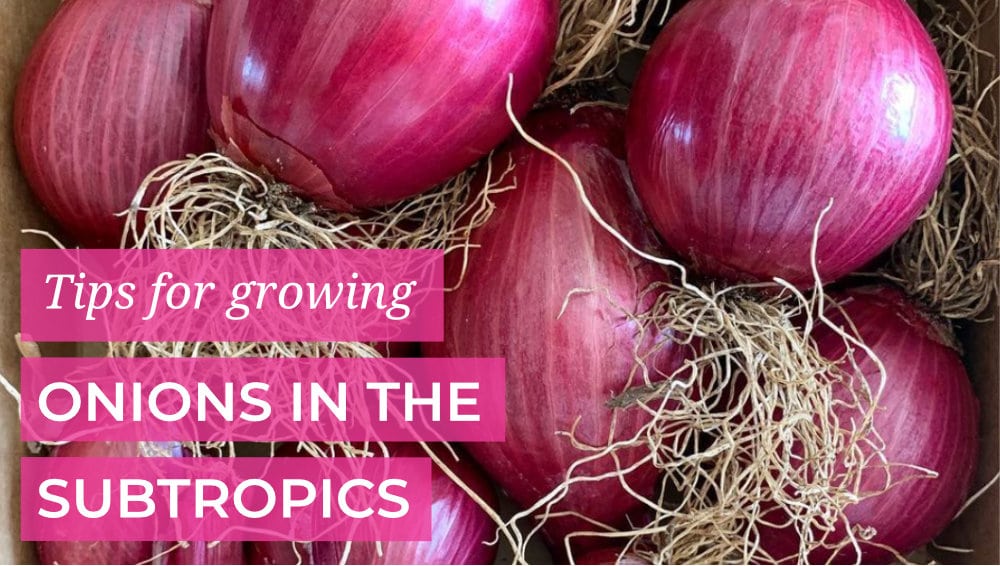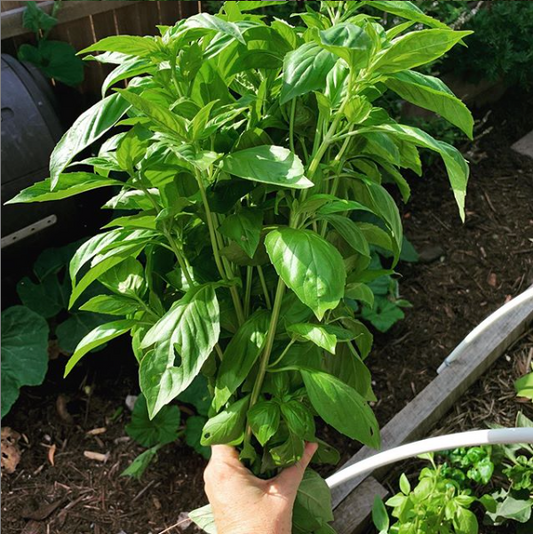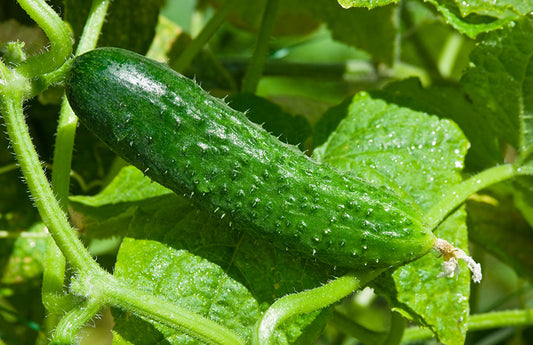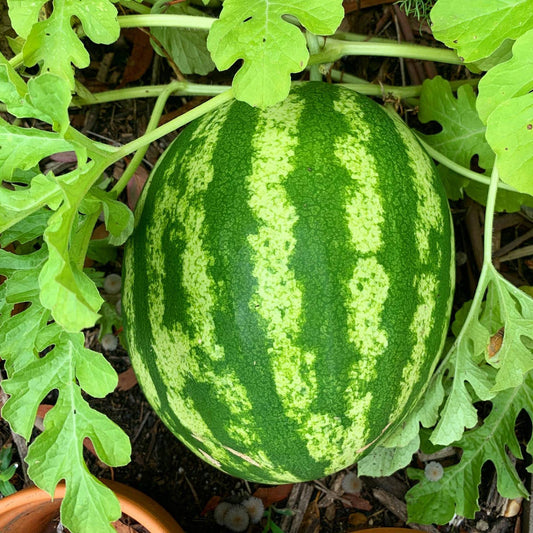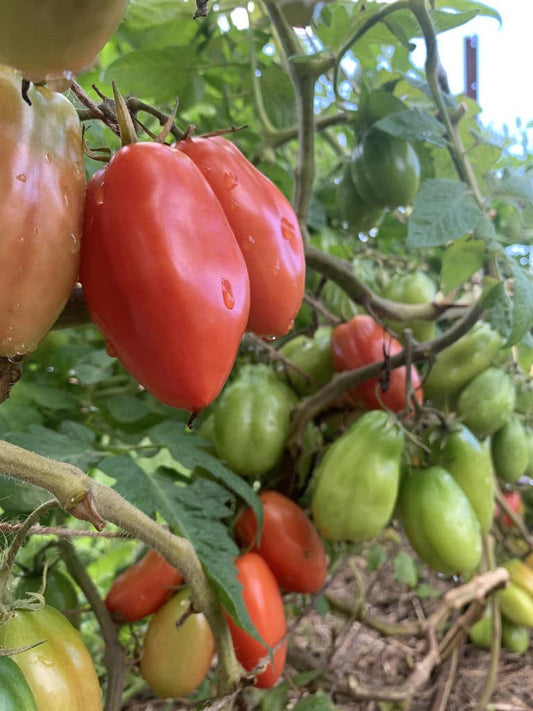Growing your own home grown onions will teach you patience. It can be challenging to grow them here in the subtropics, which is a double whammy when they are quite affordable to buy, but I still love to grow them.
Choosing your onion variety
Like garlic, we need to choose a variety that will grow fast and produce bulbs when the days are shorter.
Most onions take a long time to grow, some as long as 12 months, so short day varieties will grow quicker.
Our favourite onions to grow here are the Gladalan Brown, Long Tropea Red and the Red Creole. You can find all our onion seeds we grow and stock here.
Buying seedlings
Unlike some other root veggies, onions will handle transplantation so it’s perfectly fine to purchase seedlings ready to plant. The only downside is not having a great choice of variety so you may end up with a long day variety which won’t do as well. .
Growing onions from seed
Definitely start these in trays, but opt for deeper trays. I also use a regular potting mix as a base as opposed to seed raising mix. We then lightly cover with the finer seed raising mix.
We do lines of the seeds as they are easier to divide than some other seeds, just lightly cover and water in with a fine mist. Keep them in the tray for as long as you can (I recommend 8 weeks), so if you don’t go with a regular potting mix you will need to give them a boost. A regular seed raising mix will not support good early growth. A standard liquid fertiliser applied once a week will be enough.
Onion seeds are very fragile and have a short lifespan, so if you don’t store them well your germination rates may be low, If you find when they germinate they ‘loop’ gently snip them with scissors to prevent them pulling their own roots out.
When to grow onions in the subtropics
We start ours in April and don’t plant out in the garden until June, you want them fairly well established before transplanting. Which is good because you can get a quick crop of asian greens in while you’re waiting, it also ties in perfectly with a sweet potato harvest. Sweet potatoes out, bed prep and in they go.
Preparing your bed for onions
Even though these are root veggies they are heavy feeders, you want fast growth early on for good root development later on. Add some blood and bone with your manure and compost as this will help with the root development. They don’t handle wet feet so make sure the place you choose has good drainage (raised beds work really well).
Planting out your onions
Transplant around the 8-12 week mark. We dig little trenches and backfill the seedlings, don’t worry about them lying down, once they kick into gear they will stand up on their own. Water in with a seaweed emulsion.
Ongoing care as they grow
Similarly to Garlic, we give weekly feeds of liquid fertiliser during the growing season. A month before they are due to harvest, we slow down with the water to prevent the bulbs from rotting.
Knowing when to harvest your onions
When it comes to harvest, you can have a little ‘bandicoot’ to check the size, if I find the bulb isn’t forming and they’ve been in the ground for a long time, I bend over the stem. It’s an old wives tale but it works for me!
They will be ready to harvest when the leaves have fully browned and fallen over. You can pick them at any size though, they will just cure and store better if they die back in the ground.
Curing for storage
After harvest dont wash them and leave the foliage on. Put them out to dry for a few weeks in a dry spot with plenty of air flow- leave them until the stems have completely died back otherwise they will rot. I usually leave that stem on until it just falls off on it’s own.
Do you grow onions? What are your tips for a bumper crop. Leave a comment below.

